Spring is typically one of the busiest times of the year, with our interns and volunteers active in a variety of wildlife and habitat conservation projects across the state. This year, spring looked and felt different for us, as it probably looked and felt different for you. We appreciated your understanding as we delayed or cancelled many of our intern and volunteer activities, and we admired your flexibility as we began inviting you back into the field, implementing new practices to ensure your safety. You are an integral part of our daily operations and we are grateful for your contributions during this time. In this edition, we share some of the field projects our staff have kept moving in your absence as well as a few projects that continued with limited volunteers in June. Additionally, we share some insights from our Volunteer Program Biologists, along with creative ways to volunteer on your own, in the field or from your home or backyard. Enjoy!
— the FWC's Volunteer Program Team
Safety
Your safety is our highest priority! We have guidelines in place to ensure that our interns, volunteers, partners and staff remain safe and healthy during these times. Here are some of the things we are doing:
Volunteer Program Biologists in the Field
Our Volunteer Program Biologists have been busy keeping up with critical fieldwork in each of their regions so that volunteers can jump back in when appropriate. Check out their good work!
Northwest Region
Emily Hardin assisted with shorebird nest monitoring on six rooftops in Bay County. Least terns and black skimmers have adapted to nesting on gravel rooftops as well as the busy sandy beaches.
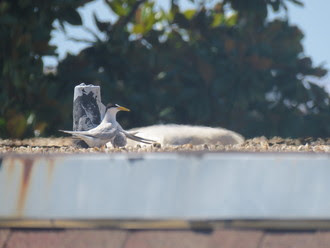
Least terns on a rooftop. Photo by Rebekah Snyder, Audubon FL.
Northeast Region
Simon Fitzwilliam helped with the annual Florida scrub-jay surveys known as Jay Watch. Jay Watch is a highly coordinated effort to survey Florida scrub-jay populations statewide. This program has expanded and evolved ever since it was started back in 2002! This year, a much-reduced version of Jay Watch was carried out by a few highly experienced and seasoned volunteers at locations such as the Ocala National Forest, the Cross Florida Greenway and other tracts of scrub habitat on a variety of Wildlife Management Areas.
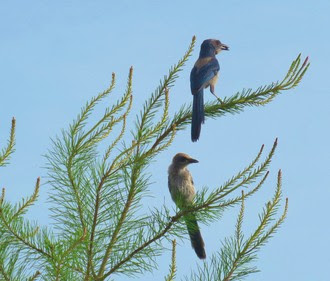
An adult and juvenile Florida scrub-jay seen during this year’s Jay Watch at the Cross Florida Greenway. Photo by Brinda Curran, FWC Volunteer.

A banded Florida scrub-jay spotted during this year’s Jay Watch at the Cross Florida Greenway. Photo by Josie Muncy, FWC Volunteer.
Southwest Region
Brendan O’Connor and other FWC staff undertook monitoring for the southeastern American kestrel in Polk and Hernando counties. This spring, Little Estero Critical Wildlife Area and an adjacent beach on Estero Island were posted. Posting is a common management practice to protect shorebird and seabird nests, along with their eggs, chicks and habitat from disturbances. It involves placing informational signs and posts to delineate buffer areas where people, vehicles and pets are not allowed to enter. Both areas are home to colonies of least terns as well as the solitary nesting snowy plover and Wilson’s plover. Brendan worked alongside other biologists and law enforcement officers posting the areas.
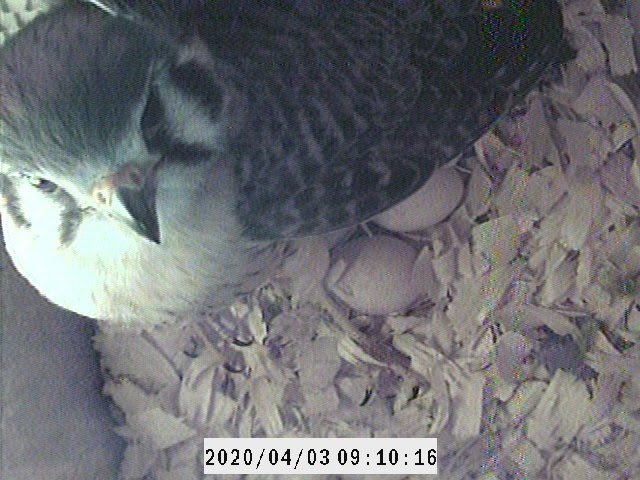
Southeastern American kestrel with eggs. FWC photo.
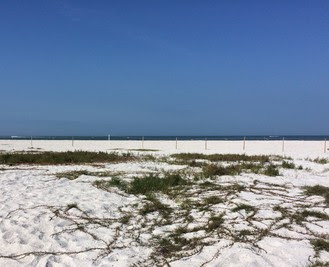
Shorebird posting on Little Estero Critical Wildlife Area. FWC photo.
South Region
Andrea Pereyra has been committed to shorebird conservation work in Monroe, Broward, Palm Beach, Martin and St. Lucie counties. She has monitored several rooftops and ground colonies for least terns and roseate terns, as well as ground sites with solitary American oystercatcher and Wilson’s plover nests. In an attempt to collect long-term information on survival, demographics and movement of certain imperiled shorebirds and seabirds, biologists put identification bands on individual birds when they are chicks. Andrea assisted Ricardo Zambrano, the Regional Biologist, with banding roseate terns in Monroe County and American oystercatchers at Lake Worth Lagoon and Bird Island Critical Wildlife Area.
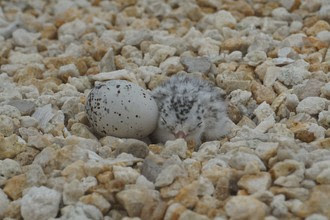
State-designated Threatened least tern egg and chick on a rooftop. Direct counts of eggs and chicks on rooftops are only conducted by the FWC when necessary. This measure is taken to prevent disturbances to eggs, chicks and adults. Photo by Andrea Pereyra, FWC.
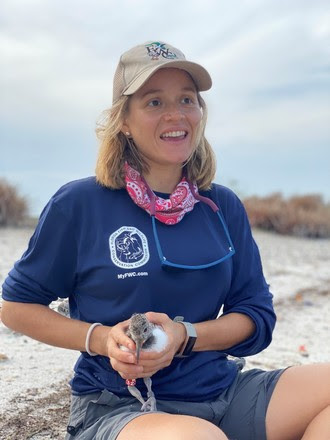
Andrea holding a recently banded American oystercatcher at Lake Worth Lagoon. Photo by Ricardo Zambrano, FWC.
| 













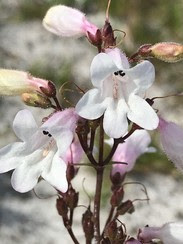
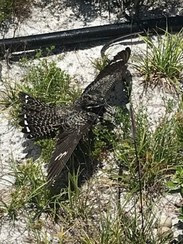


No comments:
Post a Comment